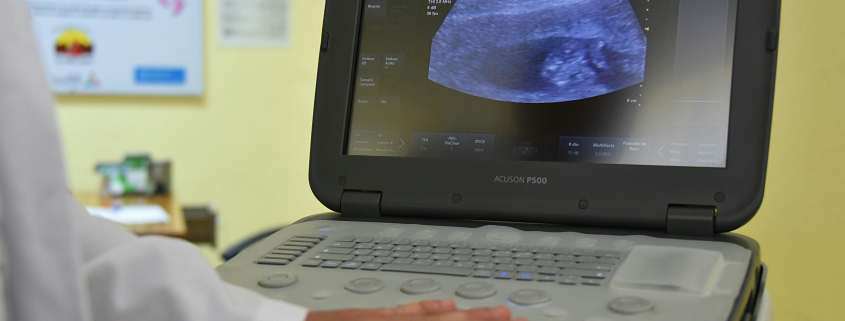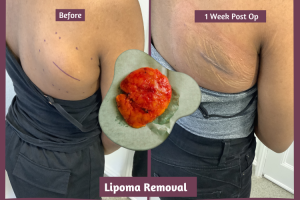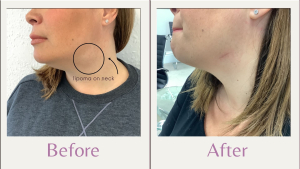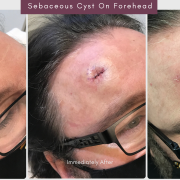Do I Need A Scan For My Lipoma?
If you’ve been diagnosed with a lipoma, or suspect you might have one, you may be wondering about the need for a lipoma scan.
A lipoma is a benign tumour made up of fat tissue. It’s generally soft, movable, and painless. But when it’s large, painful or growing, a scan may be necessary. It may also be necessary to have a scan if you are considering having your lipoma removed.
This article aims to demystify the process of a lipoma scan. I will explore different types of scans, such as ultrasound and MRI, and explain when each might be used.
I will also discuss what to expect during the scan, how to interpret the results, and the potential treatment options. My goal is to provide clear, empathetic guidance to help you make informed decisions about your health care.
Remember, while this article provides general information, it is always best to consult with your doctor for personalised advice. Let’s dive in and learn more about lipoma scans.
Understanding Lipomas: A Brief Overview
Lipomas are the most common type of soft tissue tumour. These are non-cancerous and consist of fatty tissues. They usually present as soft, rubbery lumps beneath the skin.
Most lipomas are painless and do not require treatment. They can appear anywhere in the body where fat cells exist.
The exact cause of lipomas is not well understood. Genetic factors may play a role in their development.
When a lipoma becomes painful, or grows rapidly, medical evaluation becomes important. While benign, these changes require attention to rule out other conditions.
Understanding lipomas helps in making informed decisions about when further investigation, like a scan, might be warranted.
When Is a Lipoma Scan Necessary?
A lipoma scan becomes vital under specific circumstances. Generally, lipomas do not require any intervention. However, certain changes in their behaviour might warrant a closer look.
If you notice that your lipoma is increasing in size, this might call for further examination. Changes in size can indicate the need for more detailed imaging.
Pain associated with a lipoma can also signal the necessity for a scan. Although typically painless, some lipomas can press on nerves. There is also a variety of benign lipomas called angiolipomas that can be tender.
In addition, when the diagnosis is not clear from a physical examination, a scan can help. This is crucial to differentiate a lipoma from other types of growths.
If you are considering having your lipoma removed, a scan can help to delineate how deep your lipoma is. This is important to decide whether your lipoma can be removed under local anaesthetic or general anaesthetic.
Your doctor might recommend a scan based on certain criteria. Here are some key indicators:
- Rapid growth of the lipoma.
- Pain or discomfort around the area.
- Changes in the skin over the lipoma.
- Difficulty in determining the nature of the growth – lumps around the head and neck can be a variety of things.
- Location of lipoma – lipomas in the trunk can sometimes lie deep to the muscles.
If you experience any of these symptoms, discussing a scan with your doctor is wise.
Types of Lipoma Scans Explained
There are several scan types available to assess a lipoma. Each scan offers unique benefits and levels of detail.
The ultrasound is often the first choice. It’s non-invasive and uses sound waves to produce images. This makes it suitable for examining lumps close to the skin’s surface.
An MRI scan provides more detailed images. It’s especially useful for lipomas deep within the body. MRIs use a magnetic field and radio waves to generate images.
Though less common, CT scans are another option. They use X-rays to create a detailed cross-section of the body. CT scans are sometimes used for complex cases.
The decision on which scan to use depends on the lipoma’s specific characteristics. Your doctor will guide you in choosing the appropriate scan.
Each scan type helps in diagnosing and planning the next steps. They confirm whether a lipoma is harmless or needs more attention.
Understanding the purpose of these scans can ease anxiety. Knowing what to expect can make the process feel less daunting.
Discussing the scans with a doctor will clarify which one suits your needs. You’ll have the information to proceed with confidence.
Lipoma Ultrasound Scan
An ultrasound is often the first scan choice for examining lipomas. It’s painless and does not require any preparation.
The device uses sound waves to create images of the body’s interior. This helps in identifying lipomas close to the skin.
Ultrasounds are effective for distinguishing lipomas from other growths. They provide quick results and involve no radiation.
During the process, a technician moves a small device over the lipoma. The data is sent to a monitor, producing a real-time image.
This scan is also safe for those who are pregnant. It’s a simple and effective way to examine soft tissue lumps.
Lipoma MRI Scan
MRI scans offer a more detailed view of lipomas than ultrasounds. They are ideal for lipomas located deep within the body.
MRIs use a magnetic field along with radio waves to produce detailed images. They highlight soft tissues and structures around the lipoma.
This scan type helps determine if a lipoma affects surrounding tissues. It provides clarity when the borders of a lipoma aren’t well defined.
No special preparation is needed for an MRI, and it’s pain-free. However, patients with metal implants should inform their doctor beforehand.
The detailed images from an MRI aid significantly in precise diagnosis and treatment planning. It’s a top choice when intricate imaging is necessary.
Other Scanning Techniques
Though not as common, CT scans are sometimes used for lipomas. They provide cross-sectional images via X-rays.
This method is helpful if an MRI isn’t suitable for some reason. It’s an alternative that provides different imaging perspectives.
Rarely, other specialized scans might be considered. Each case is unique, so doctor recommendations matter.
Preparing for Your Lipoma Scan
Getting ready for a lipoma scan is simple and often requires little effort. Most scans, like the ultrasound or MRI, don’t need special preparation.
Your doctor will inform you if there are specific steps to take before the scan. Typically, you can eat and drink as usual.
Wear comfortable clothing on the day of the scan, and try to relax. This can help you feel more at ease during the procedure.
What to Expect During the Scan
When you arrive for your lipoma scan, a healthcare professional will guide you through the process. They’ll ensure you feel comfortable and informed.
Depending on the type of scan, you might lie down on a table or sit in a chair. For an ultrasound, a gel is applied to the skin for better contact.
The scan itself is usually painless and quick. Ultrasound and MRI scans typically take anywhere from 15 to 45 minutes.
Throughout the scan, the technician may give instructions. This could include holding your breath briefly for clearer images.
After the scan, you can usually resume your normal activities without any restrictions. Rest assured, the professionals are there to support you every step of the way.
Interpreting Scan Results with Your Doctor
Once your scan is complete, your healthcare provider will review the images. They’ll assess the characteristics of the lipoma and provide you with a report.
The report will explain whether the lipoma appears benign or if further steps are needed. It will also give the dimensions of the lipoma and an accurate representation of how deep it lies.
Feel free to ask any questions about the results. Understanding the details will help you feel more confident about the next steps.
The results can guide decisions about treatment options or monitoring. This discussion allows for a personalised plan tailored to your needs.
Remember, your doctor is there to support and inform you. Their expertise will ensure you make informed health decisions. If you have any questions about your scan report, you can always send us a copy and we can help guide you.
Treatment Options After a Lipoma Scan
After evaluating your lipoma scan, your healthcare provider will discuss potential treatment options. Often, if the lipoma is small and harmless, no treatment is necessary.
However, if the lipoma causes discomfort or aesthetic concerns, removal might be advised. Surgical excision is a common method to remove a troublesome lipoma. It involves making an incision to extract the entire growth and something that we specialise in at The STAIANO Clinic.
We offer a ‘See & Treat’ service for lipoma removal where you can send us a photo of your lipoma and a copy of your scan report (if you have had one). We will give you a price for lipoma removal and offer you a date (usually within 7 days) to come and have a consultation with one of our plastic surgeons and your lipoma removed on the same day.
Questions to Ask Your Doctor About Lipoma Scans
It’s important to communicate openly with your doctor about your lipoma scan. To aid this dialogue, consider preparing a list of questions to clarify any uncertainties.
You may want to ask about the necessity of a scan and potential outcomes. Understanding the reasons behind your recommended scan can provide peace of mind.
Here are a few questions you might consider:
- Why is a scan necessary for my lipoma?
- What type of scan would be most suitable and why?
- Are there any risks or side effects associated with the scan?
- How will the results influence my treatment options?
These questions can help guide your conversation. Feel empowered to gather all the information you need to make informed health decisions.
Conclusion: Making an Informed Decision – Do I Need A Lipoma Scan?
Your doctor will guide you to make a decision about whether you need a scan of your lipoma.
There are some features that will make it more likely that you will need a scan:
- Size – if your lipoma is bigger than 5cm in diameter
- Location – if your lipoma is in your neck or your trunk
- Symptoms – if your lipoma is rapidly growing or painful
Choosing whether or not to proceed with a lipoma scan can be daunting. Consult your GP to see if a scan is necessary. If your GP is unable to help you, then we can arrange for a lipoma scan at one of our partner hospitals who will provide a report that will allow us to proceed with treatment. Please call the clinic on 0121-454 3680 for more details.
Ultimately, your comfort and peace of mind matter most. Making informed choices leads to more effective healthcare decisions. Trust the process and remember, you’re not alone on this journey.








Leave a Reply
Want to join the discussion?Feel free to contribute!